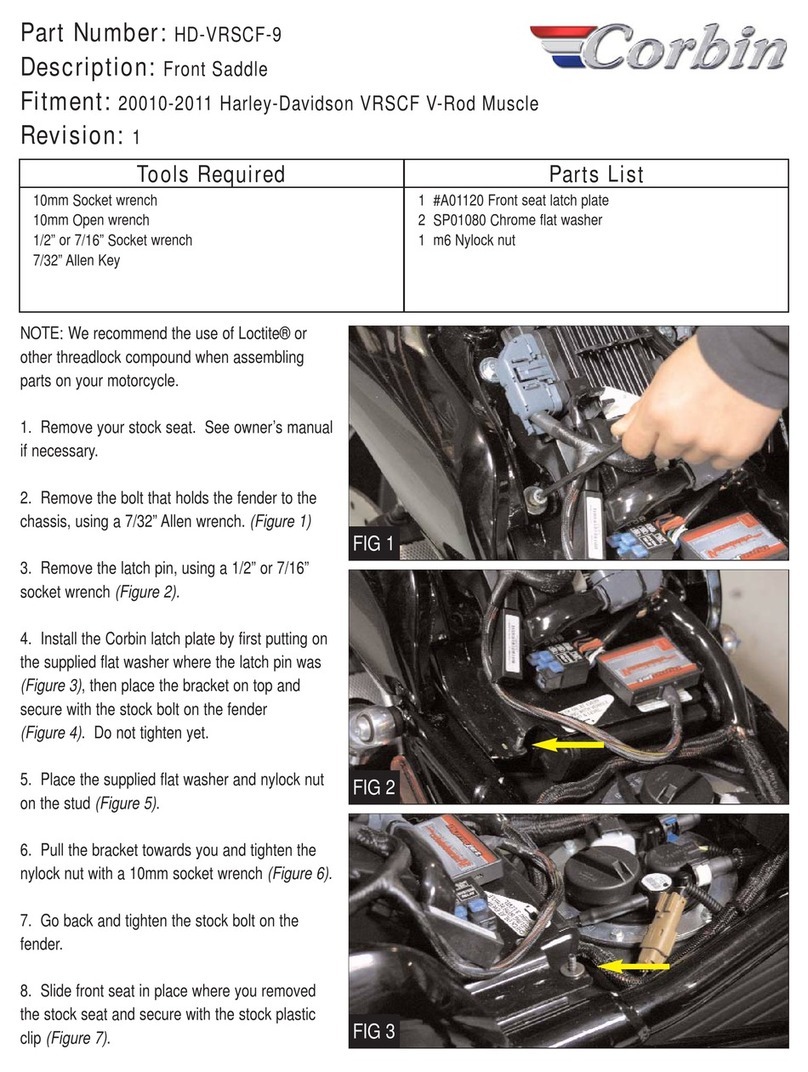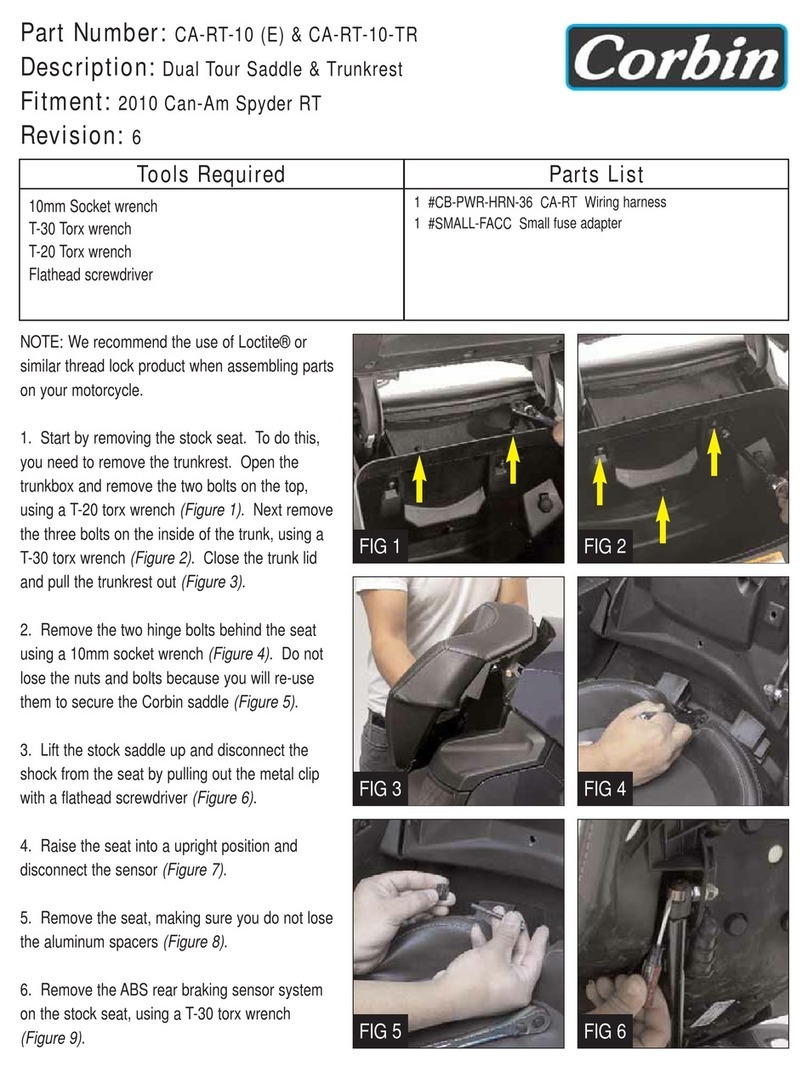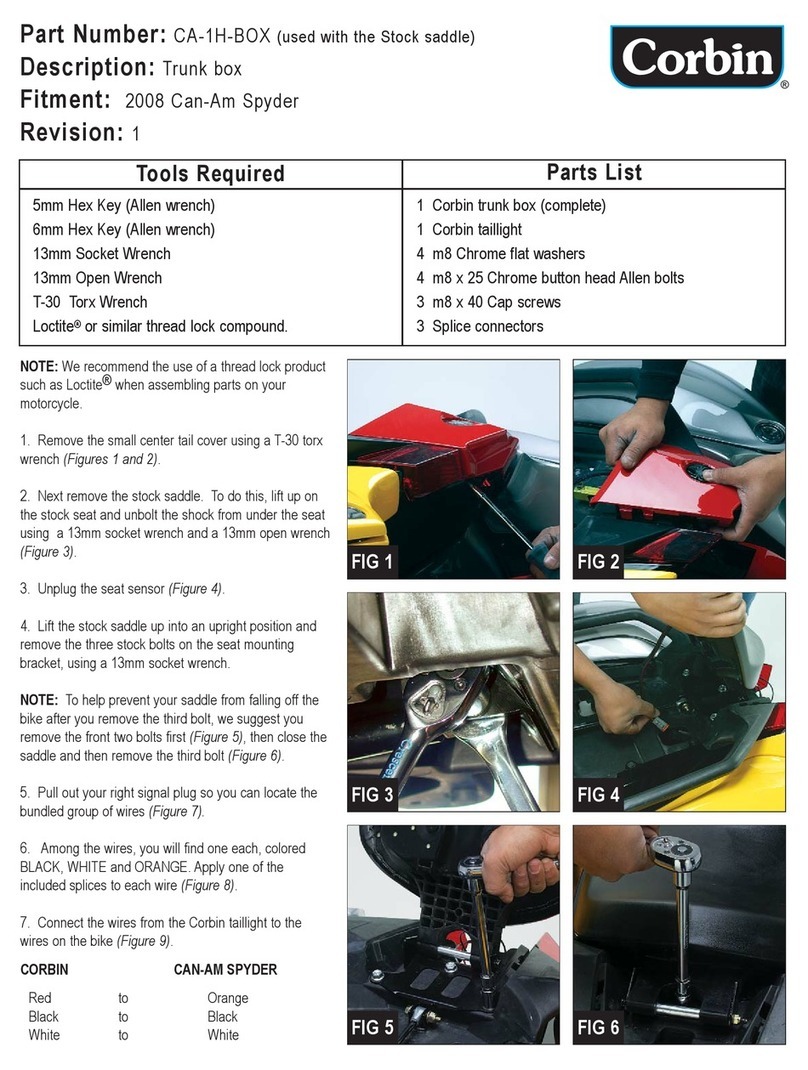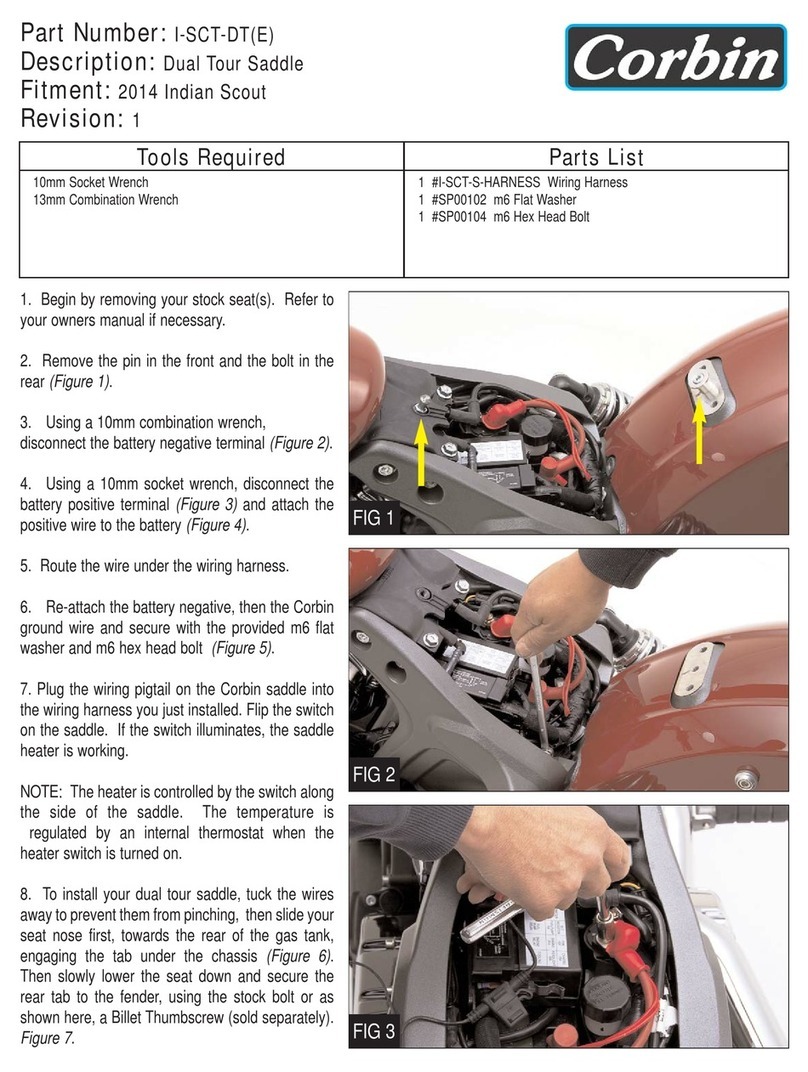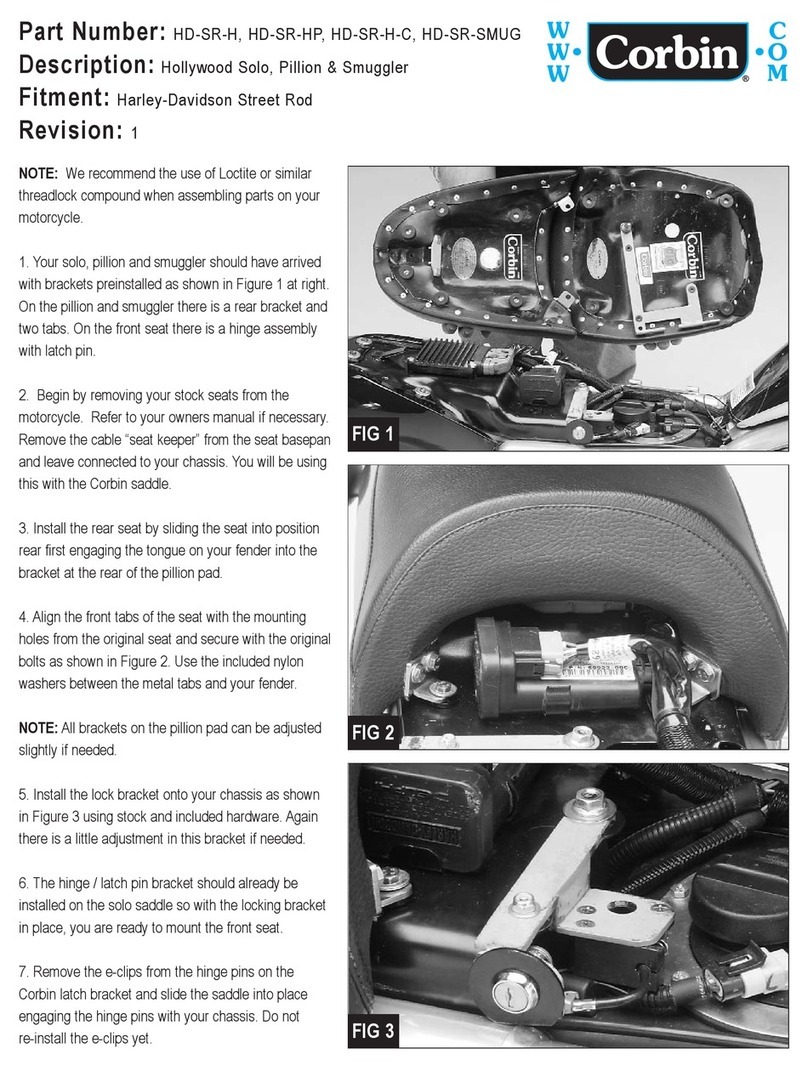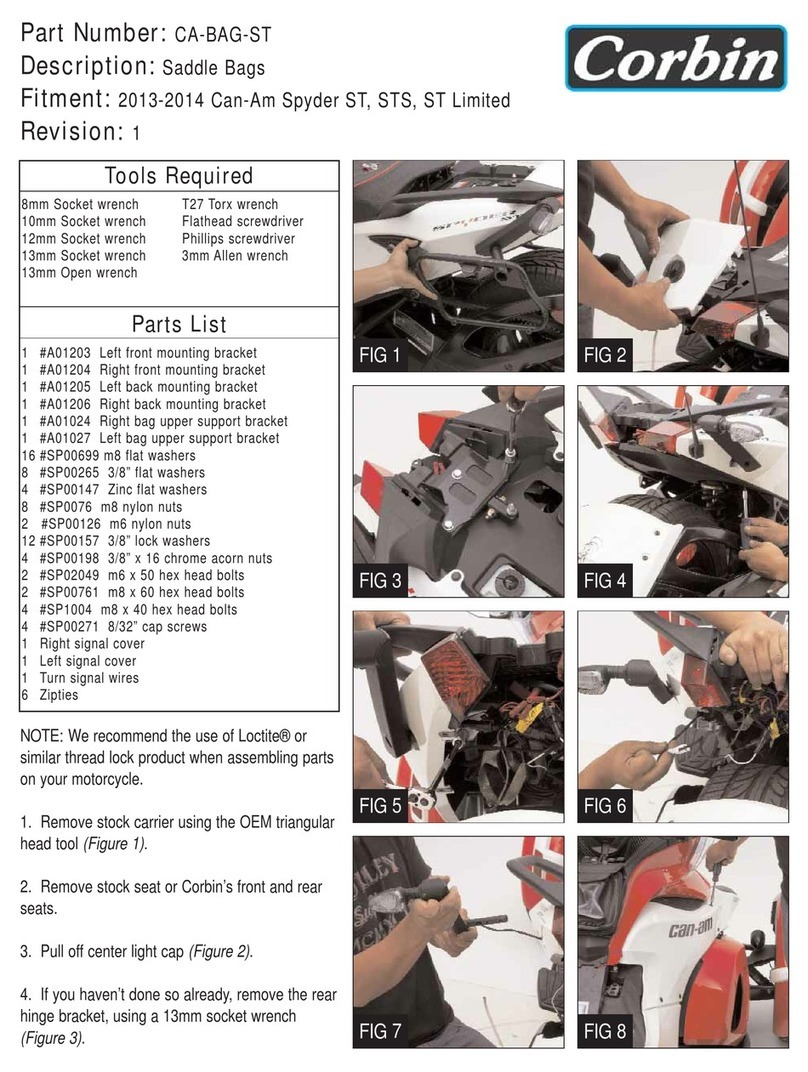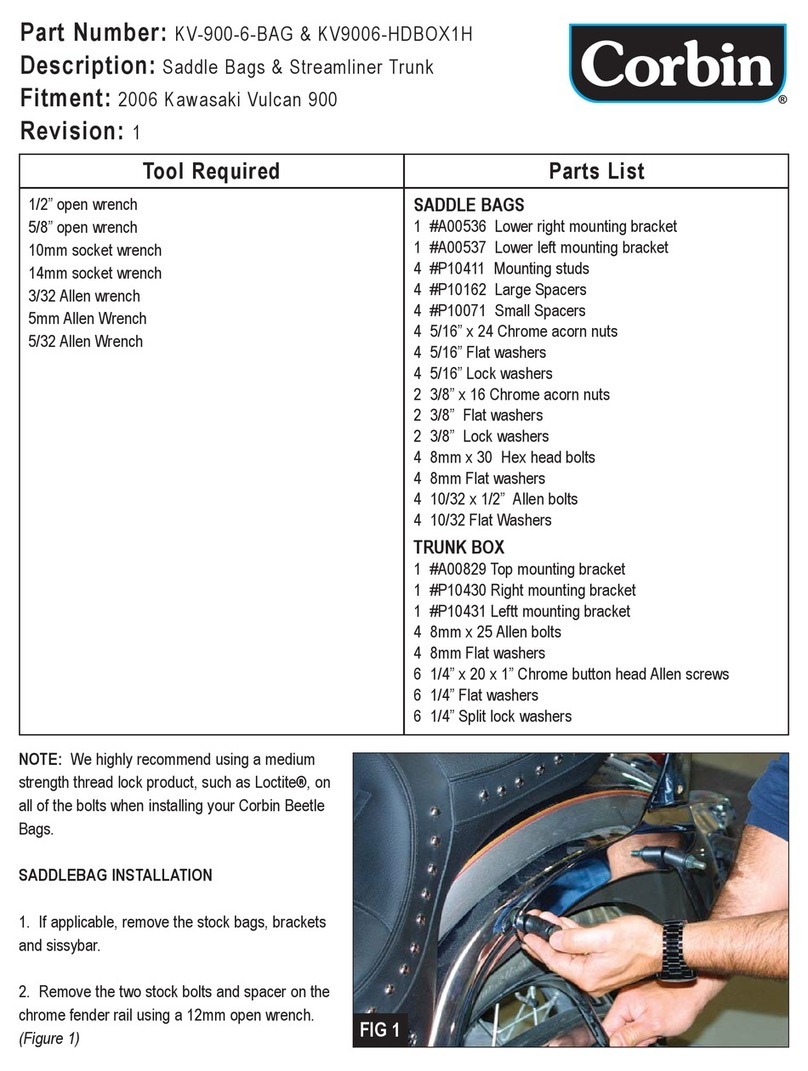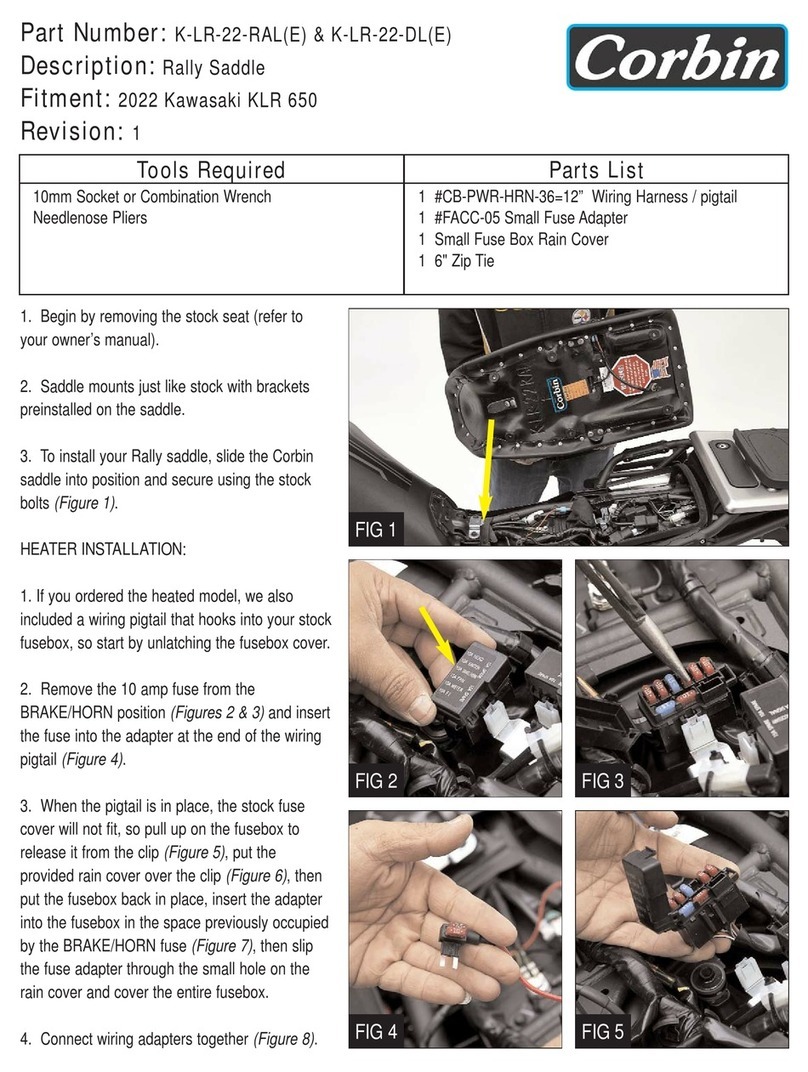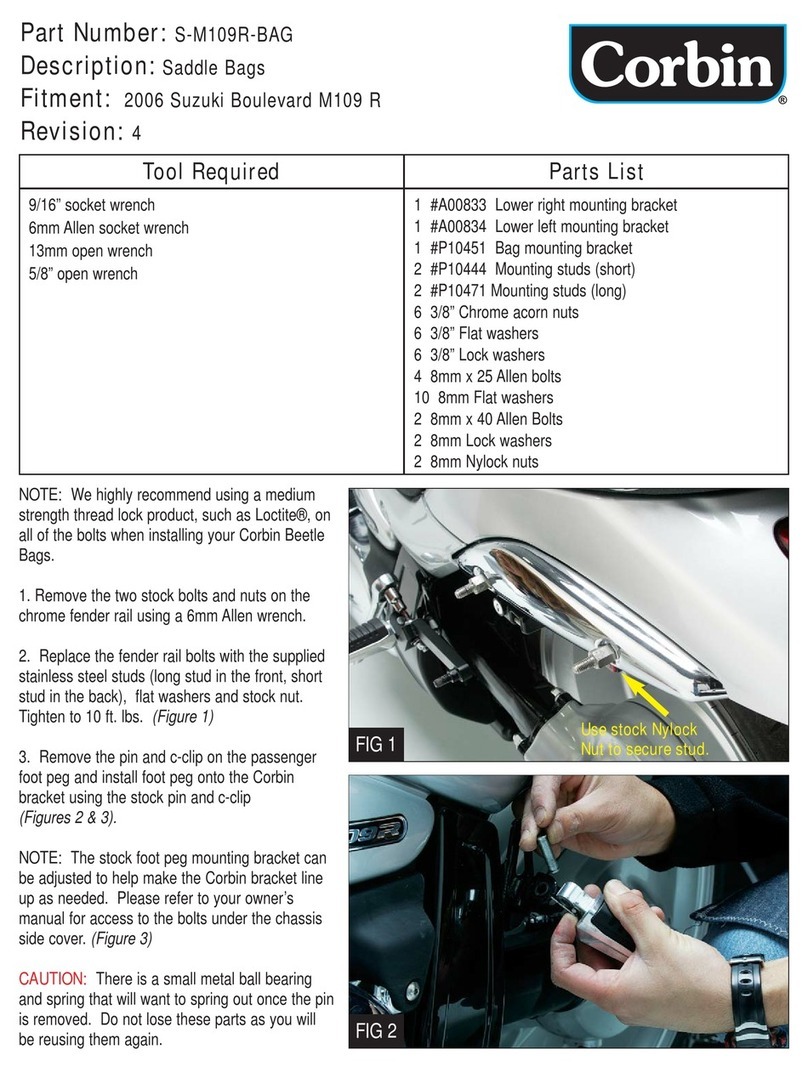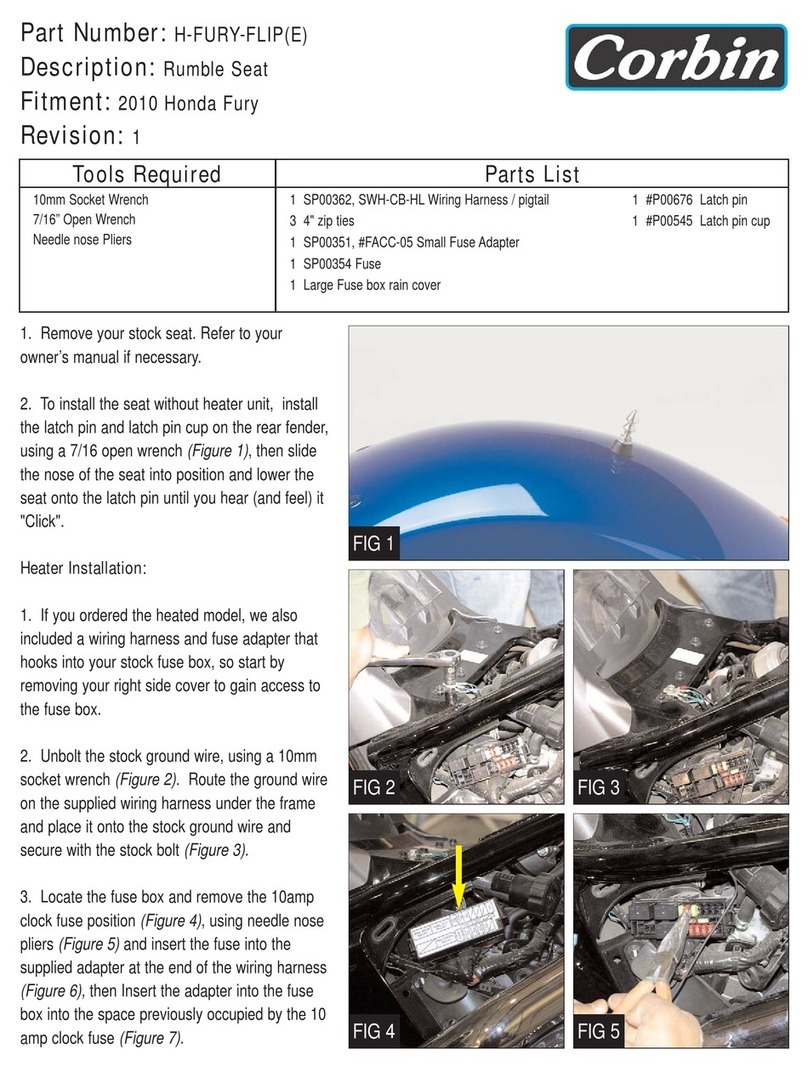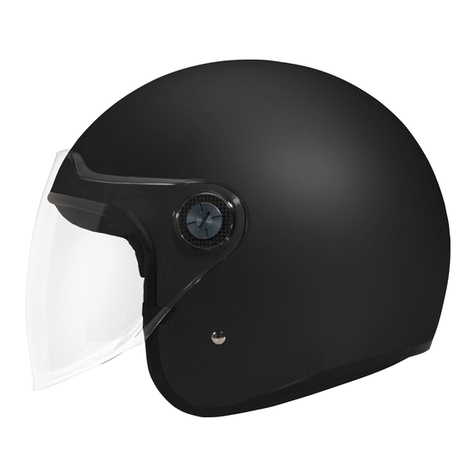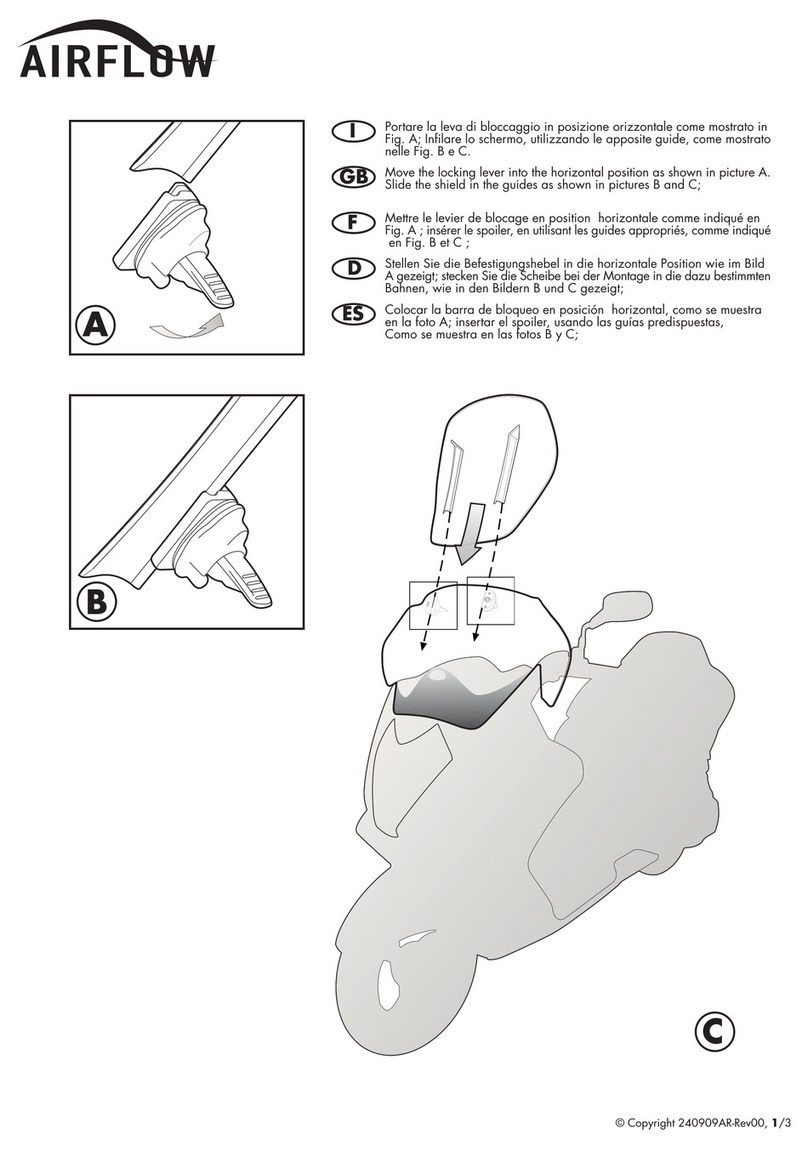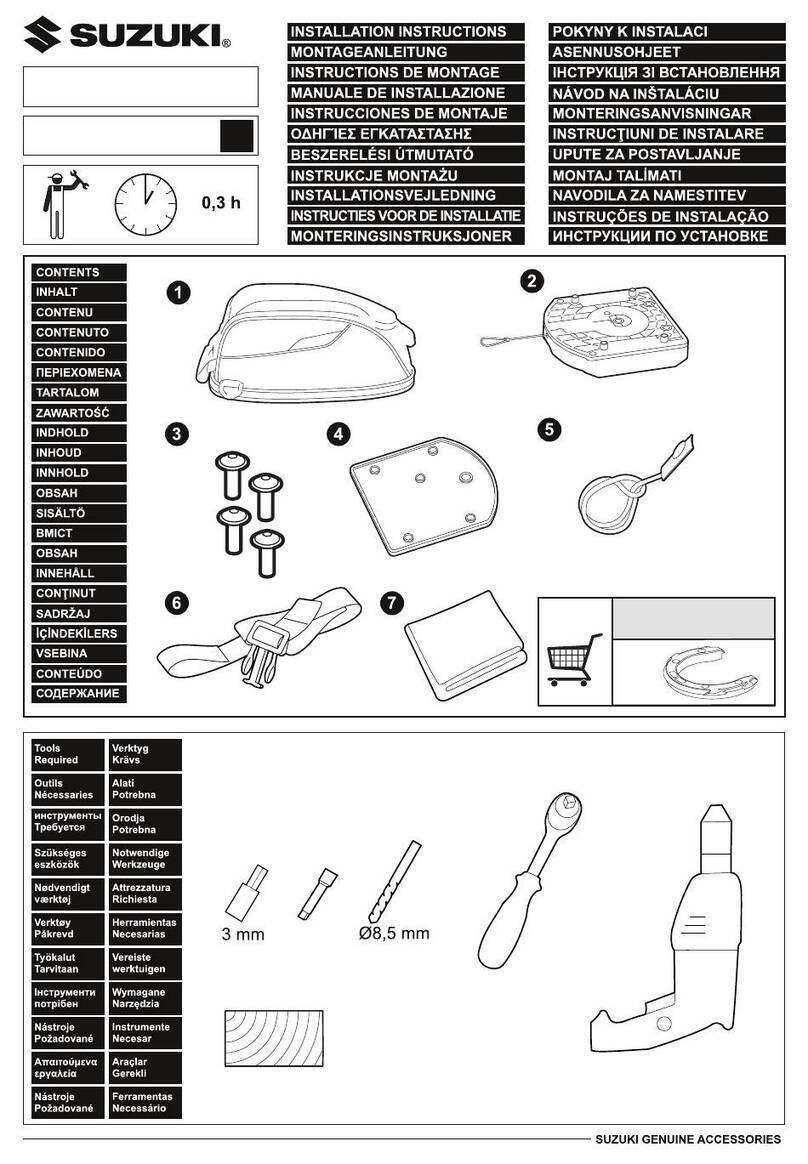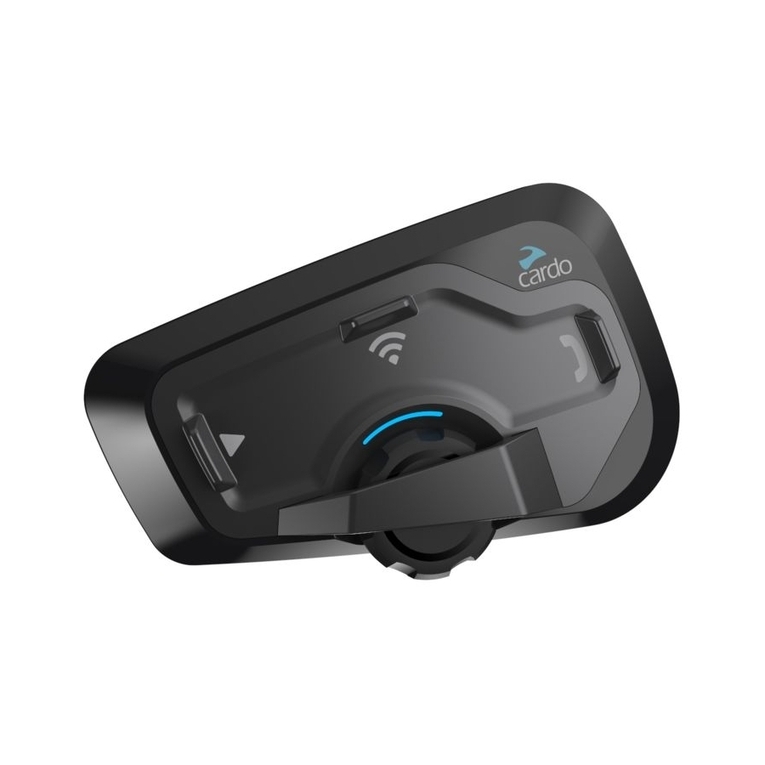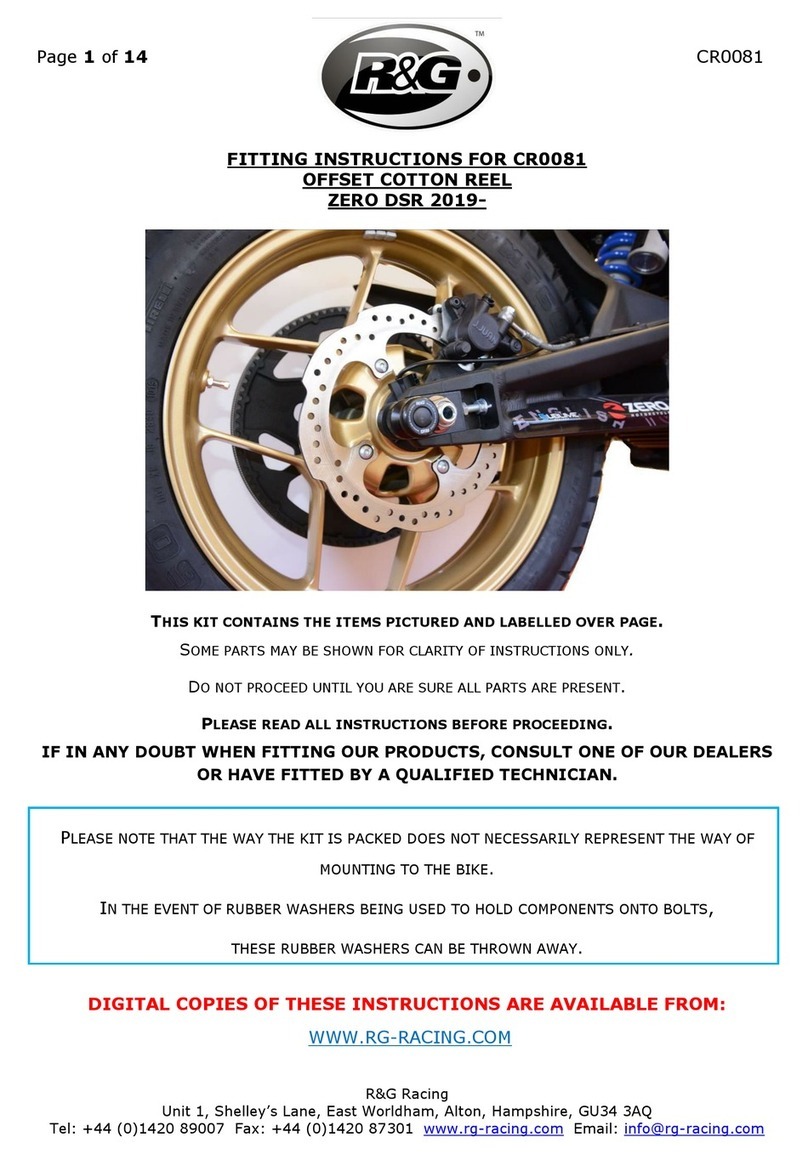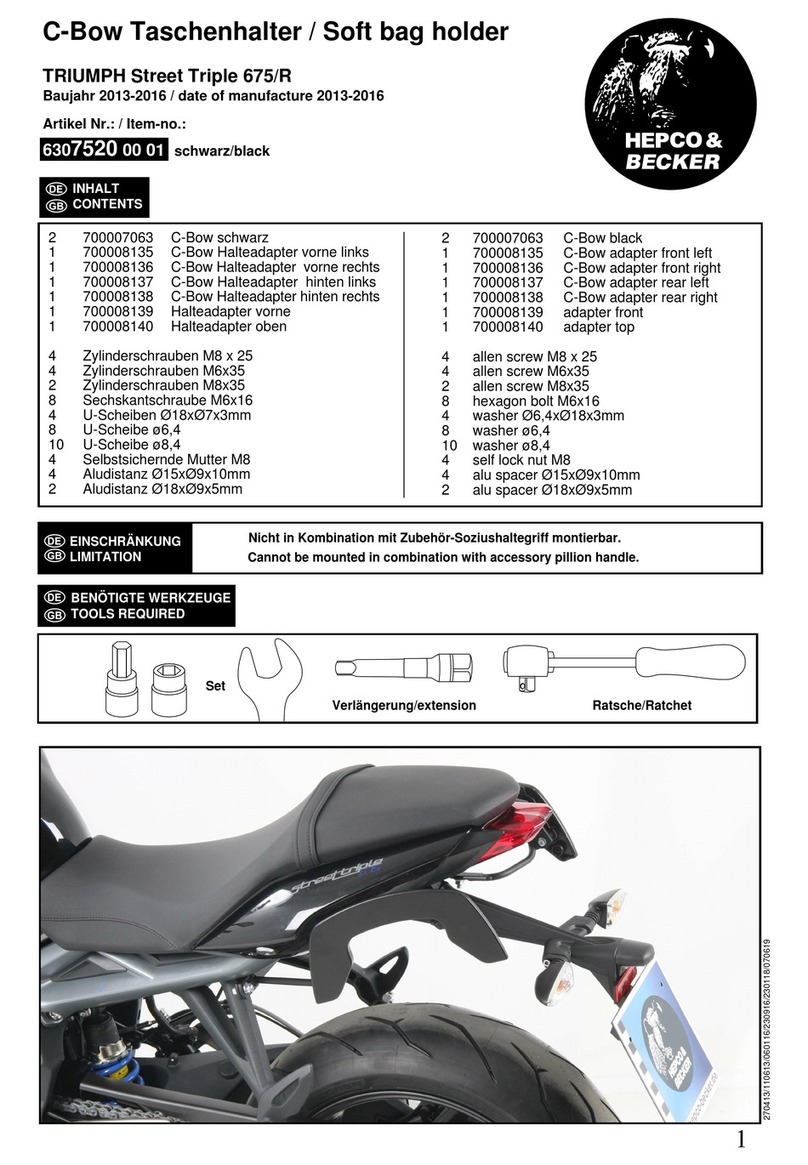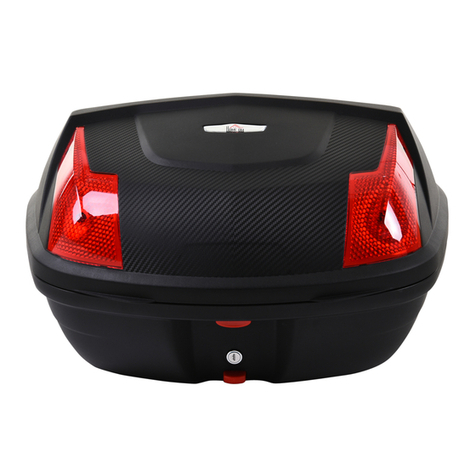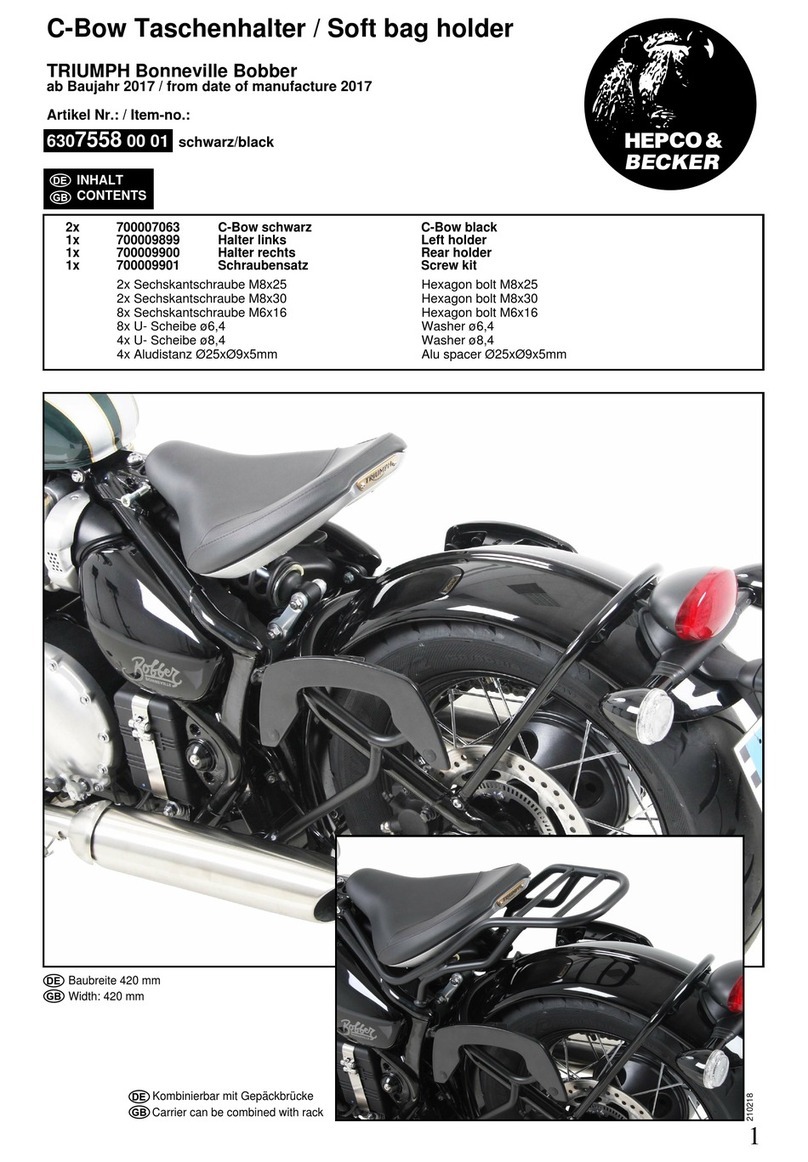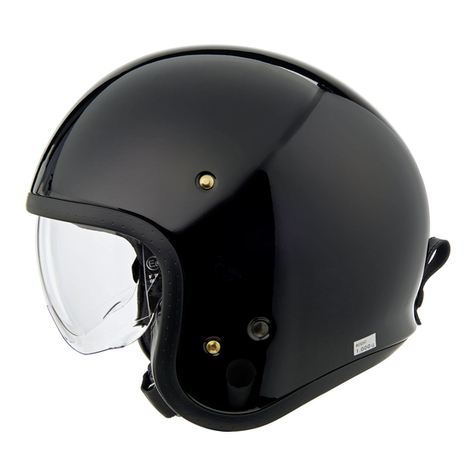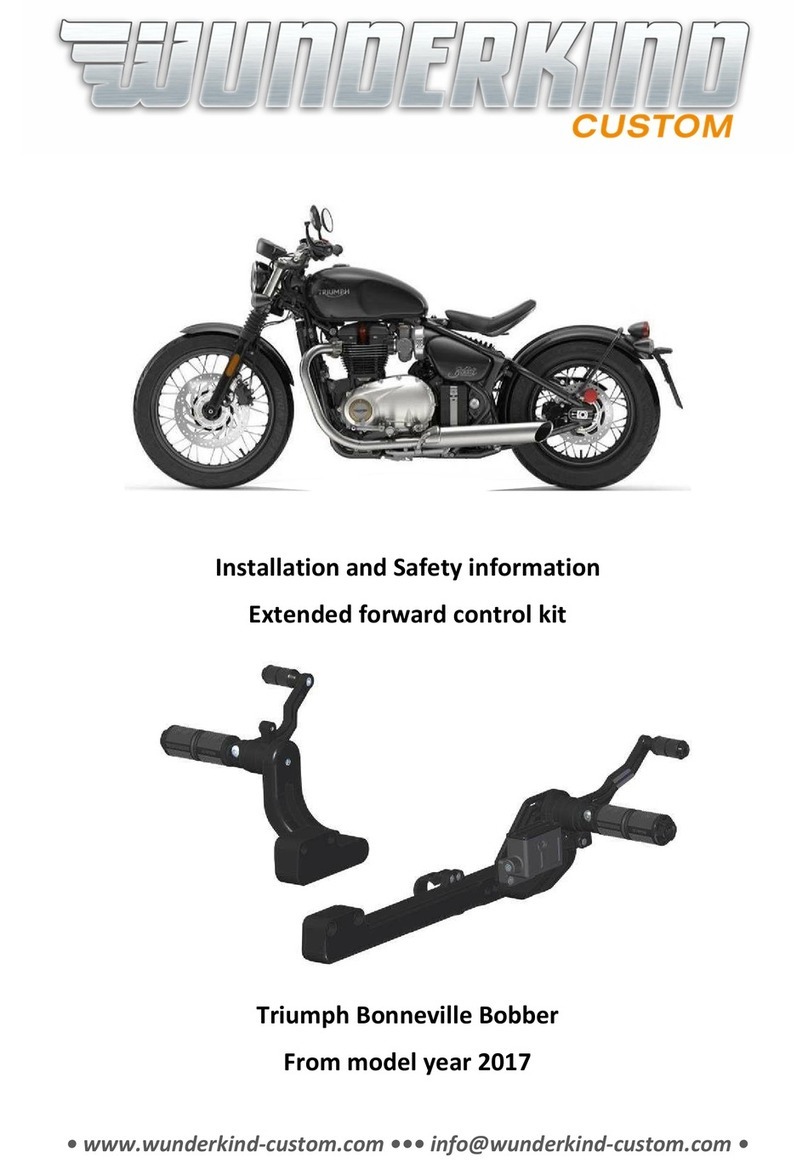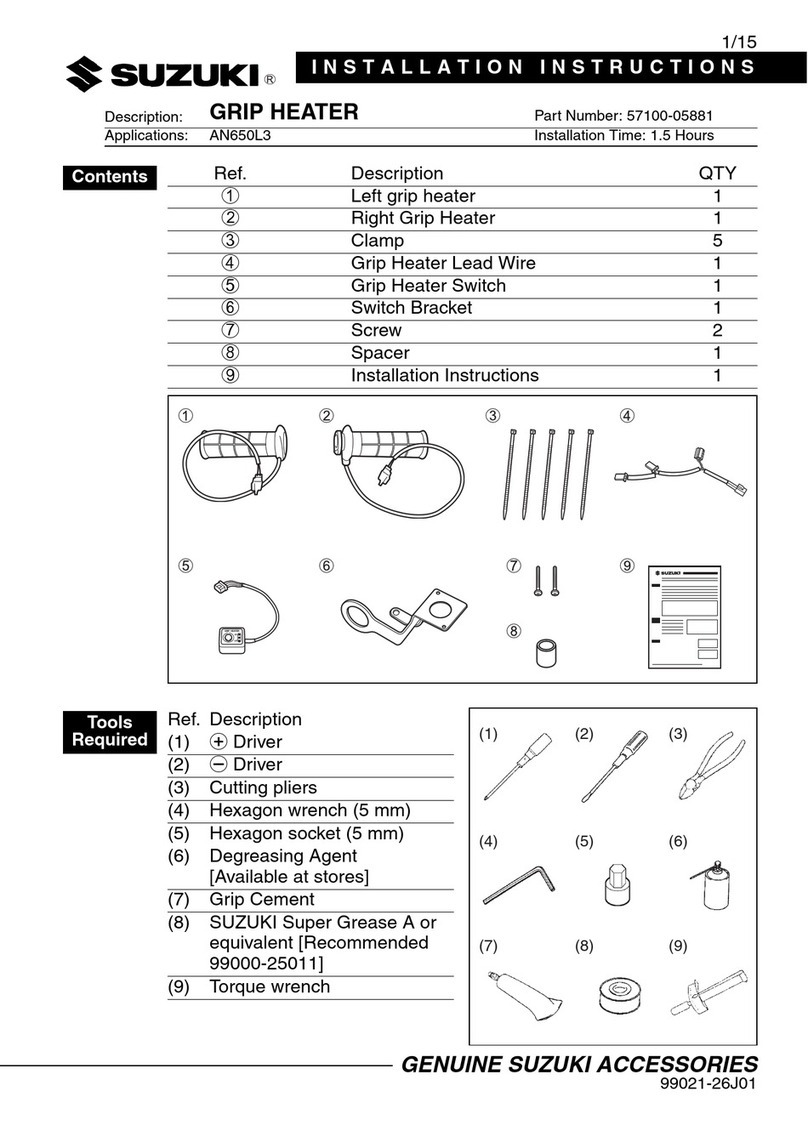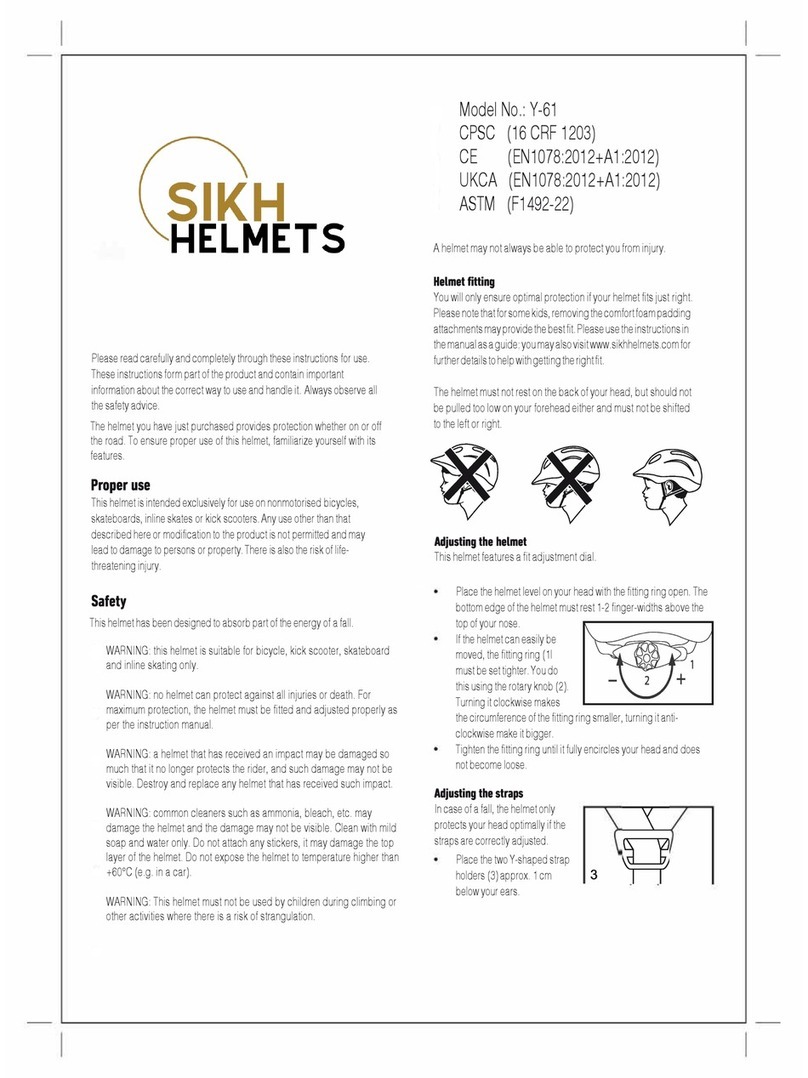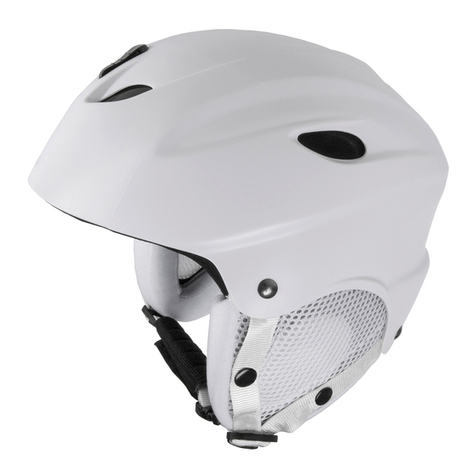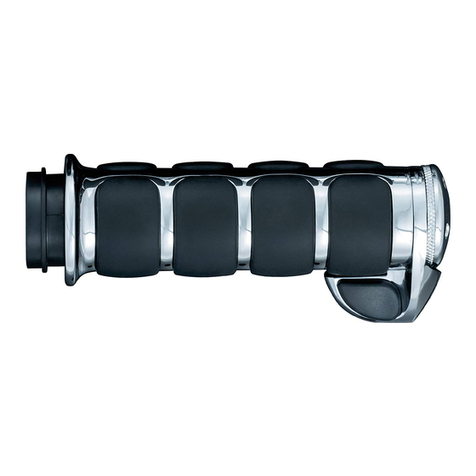5. Replace the fuse box cover, making sure not to
pinch the wires.
6. Route the wiring where it will not be pinched
against the chassis, by the seat or other objects as
this could cause a short.
7. Attach the ground wire to the negative terminal on
the battery, using a Phillips screwdriver. (Figure 4)
8.
Wind up the wiring harness leaving approximately
10” of wiring to connect to the saddle. Tie the excess
with the provided zip ties and secure neatly out of the
way before mounting the seat to prevent potential
damage. (Figure 5)
9. Reinstall the side cover
10. Install the supplied #SP11015 latch pin and 6mm
flat washer into the tab at the base of the gas tank.
Secure with a 6mm flat washer and nylock nut, using
a 7/16” open wrench for the pin and a 10mm open
wrench for the nut. Tighten to 6 ft. lbs. (Figure 6).
11. Mount the rear bracket to your fender as shown in
Figure 7 using the 1/4 x 20 NyLock nuts and 1/4” large
washers. Slide the bracket onto the studs and secure
in place. Again, there is adjustment built into this
bracket, start roughly in the center and adjust as
needed after the seat is installed.
12. Figure 8 shows how your chassis should look
when the saddle is ready to install. Notice the rear
bracket lays on the fender to create a platform parallel
to the ground. If it slopes radically downward, it has
been installed in reverse. Remove and apply correctly.
Tighten these nuts to 10 ft. lbs.
NOTE: The threaded holes in the rear bracket are not
used in this application.
13. To install your saddle, simply slide the tongue
located at the REAR of the seat under the rear fender
bracket. Now lower the nose of the seat so the lock
mechanism engages with the latch pin.
NOTE: When the seat is installed properly, you will
hear ONE click as the lock engages the latch pin. If
needed, you can add a washer under the latch pin to
raise it up.
FIG 3
FIG 4
FIG 5
FIG 6

